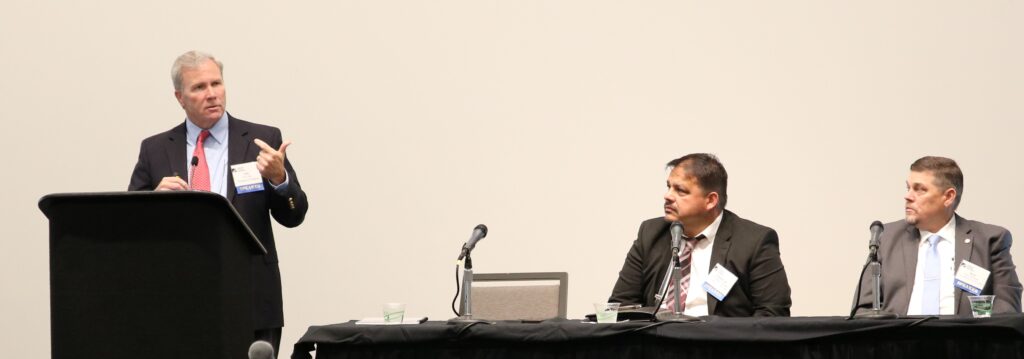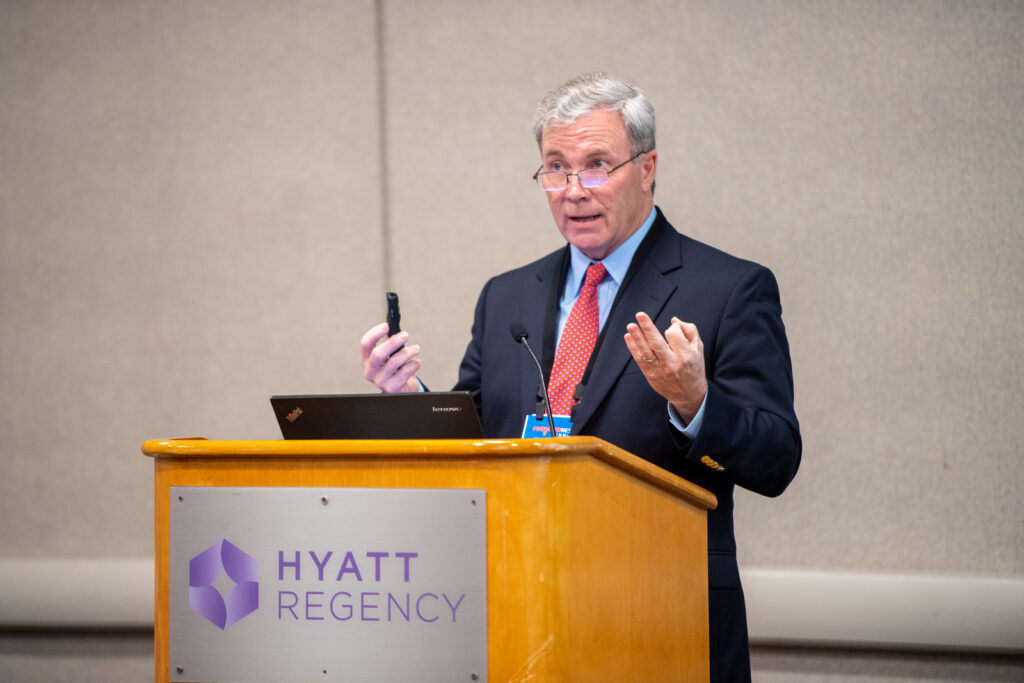
Eric Cote, left, speaks at the California Hospital Association’s 2023 Emergency Preparedness Summit on October 5, 2023 where he and his LA County EMS Agency clients introduced the Healthcare Facility Emergency Power Resilience Playbook. With Cote are EMS Agency officials Chris Sandoval, Disaster Services Manager (center), and Terry Crammer, Chief, Disaster Services (right).
Powered for Patients (P4P) Project Director Eric Cote recently joined LA County EMS Agency officials in a panel presentation at the California Hospital Association’s (CHA) Emergency Preparedness Conference in Sacramento, CA to introduce the new emergency power resilience protocols Cote helped the EMS Agency develop.
The new protocols were unveiled in the EMS Agency’s recently published Healthcare Facility Emergency Power Resilience Playbook which is the culmination of the comprehensive emergency power resilience initiative launched by the EMS Agency in May 2019. Cote authored the Playbook, a key deliverable in the multi-year initiative he led on behalf of P4P, which was hired as the project consultant by the EMS Agency.
Cote and his LA County EMS Agency clients, Disaster Services Chief Terry Crammer and Disaster Program Manager Chris Sandoval, introduced the Playbook and its new protocols at a panel discussion during the CHA conference. “The Playbook is a blueprint that can serve as a roadmap other jurisdictions can follow to bolster emergency power resilience in their hospitals,” said Cote, who is currently developing a toolkit other jurisdictions will be able to use as an instruction manual to guide their own efforts to create a variation of the LA County Playbook suitable for their jurisdiction’s hospital landscape.
The annual CHA conference brings together hundreds of hospital emergency managers and public health officials to learn about new approaches and best practices in addressing the common challenges facing hospitals throughout California. Given the ongoing wildfire threat, the continuing use of Public Safety Power Shutoffs (PSPS) by California utilities and the ever present but remote possibility of a major earthquake, power outage preparedness remains a top priority for California’s emergency managers, public health officials and those operating the state’s 553 hospitals.
Cote applauded the EMS Agency’s Crammer for his early interest in launching the emergency power resilience initiative. “Terry Crammer and I began discussing a potential initiative in 2017 and we continued those discussions over the next two years,” said Cote. “Given the growing threat of Public Safety Power Shutoffs, and the sizeable fleet of temporary generators owned collectively by LA County agencies and the cities of Long Beach and Los Angeles, Terry realized that LA County needed a plan to better safeguard emergency power and create protocols to effectively leverage the county’s significant temporary emergency power resources.”

